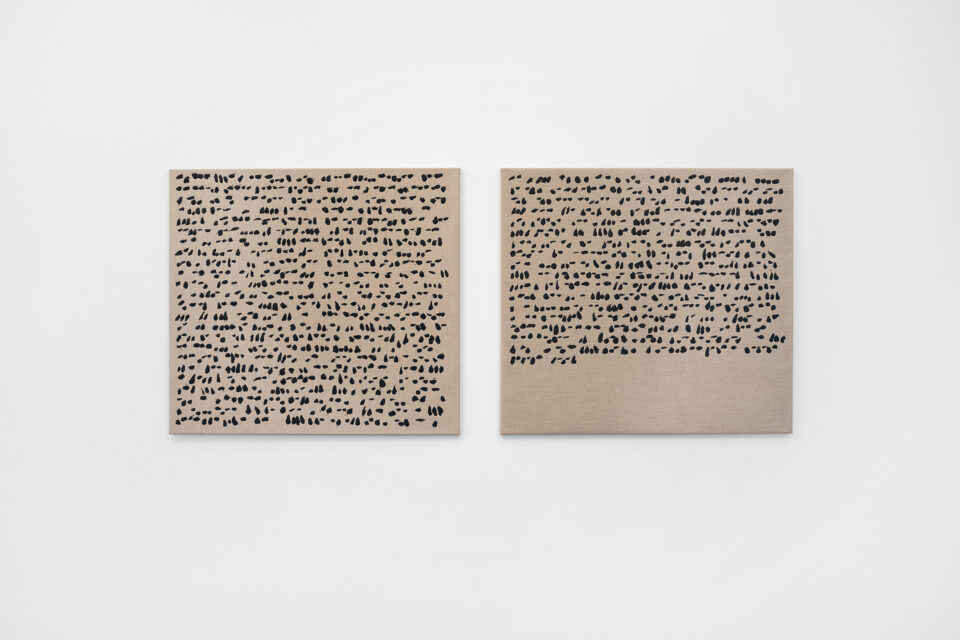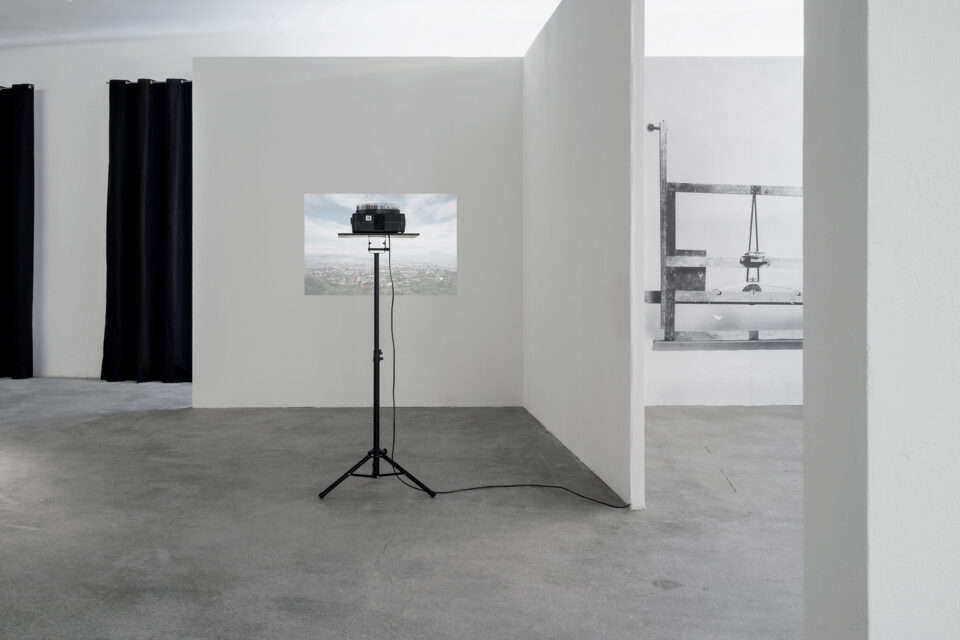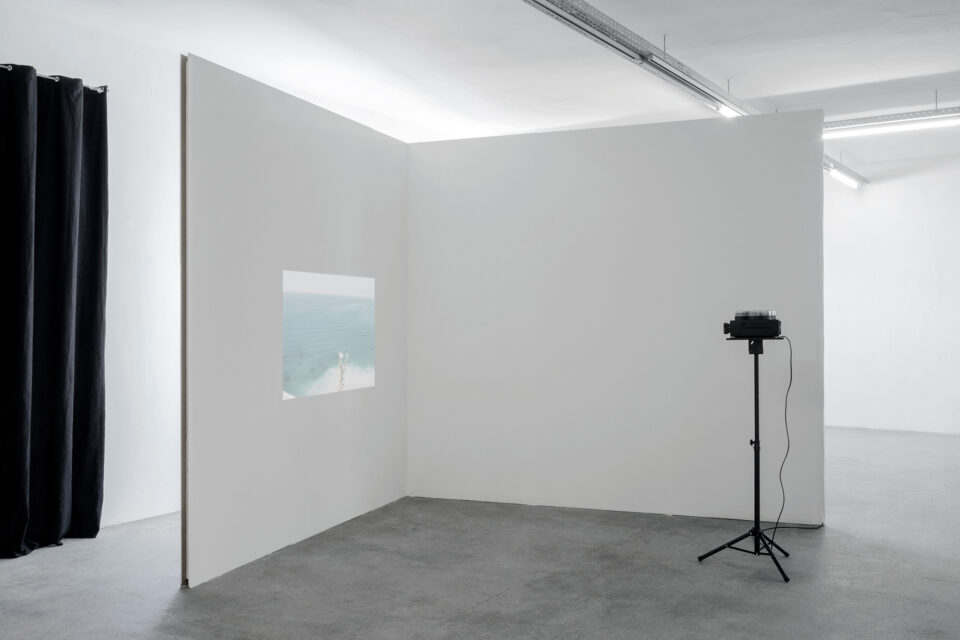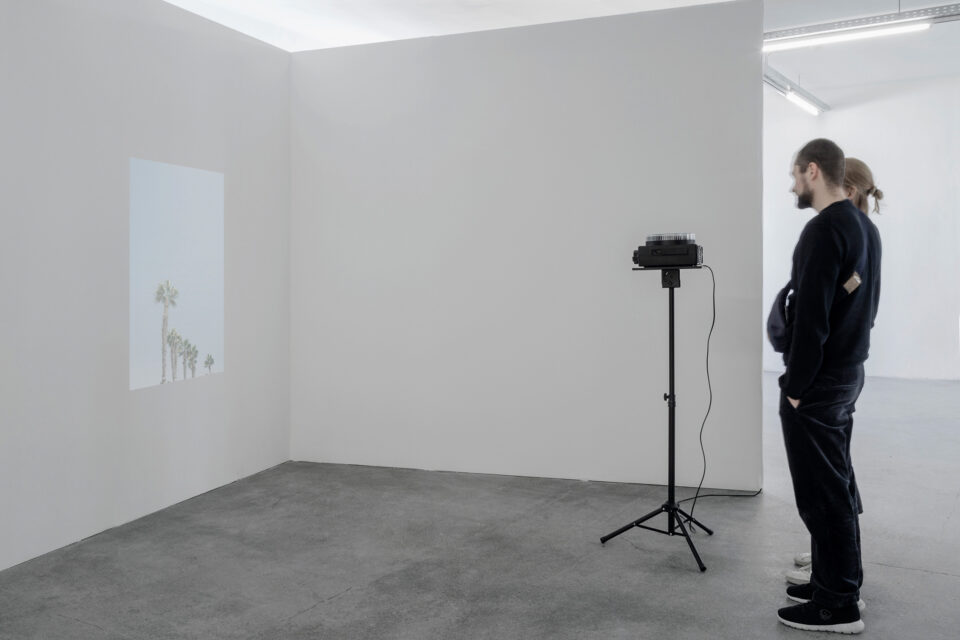Floating Landscapes
The concept of landscape in the exhibition “Floating Landscapes” serves as a metaphor for layers and overlaps of temporalities. The resulting forms, whether geological or cultural, are constantly set in motion by internal and external forces, housing compressions and inscriptions of only relative permanence. Discussing landscape as such a spatial construct—shaping affiliations, identities, and politics—allows for understanding the term as a structure of socio-economic contexts and opposes an understanding of landscape as a projection surface for desires and idealized memories.
One of Stefan Zweig’s most renowned works is the collection of historical snapshots he compiled in 1927 under the title “The World of Yesterday.” In the 5th chapter, “The First Word Across the Ocean,” Zweig describes the drastic changes of the 19th century through a monumental project: the laying of the transatlantic telegraph cable. After multiple failures, a major industrialist named Cyrus W. Field successfully laid a 5100-kilometer-long deep-sea cable for telegraphic communication across the Atlantic in 1866, connecting America and Europe. This endeavor built upon the invention of the electric telegraph, previously constructed or conceived by Samuel Morse, along with Morse code. The deep-sea cable soon linked all continents and countries, thereby representing the world’s first global communication network. Presently, hundreds of message, alternating current, and direct current cables dominate the maritime underwater landscape. Plans by Google and Facebook to connect more parts of the world through a 37,000-kilometer-long underwater fiber optic cable to enable faster internet connectivity are already underway. Especially in the latter half of the 19th century, with rapid progress and new scientific achievements, it became crucial to introduce standardization processes to drive this global interconnection. Thus, not only was the unit of length standardized to one meter, and the Morse code replaced and standardized with the Morse alphabet, but the frequency of electric current was also unified. Due to issues arising from the different frequencies of alternating current, an agreement was reached, for example, in Europe for a network frequency of 50 Hz (in North America, it is 60 Hz).
The 19th century witnessed the emergence of new geopolitical actors wanting to participate in the race for the colonial division of Africa, particularly driven by an interest in the country’s reserves of raw materials. Until the First World War, European powers expanded their colonial holdings by more than 23 million square kilometers. However, the colonial masters were not solely interested in exploiting the resource-rich land and its inhabitants but also in asserting dominance at sea. Particularly nefarious was the further development of maritime law from the mid-20th century when, based on new geological findings, the continental shelf was recognized as the undersea extension of the state’s land territory, thus enabling the neocolonization of the seas. Due to these new agreements, all mineral resources located on and under the seabed within a continental shelf boundary of up to 200 nautical miles belong to the corresponding mainland. However, even these boundaries are often not upheld and are expanded under the pretext of new research for their own political claims. Given that the seabed covers almost 70 percent of the entire Earth’s surface, estimates suggest occurrences of manganese, copper, nickel, and cobalt in several hundred billion tons—a supply that could meet demands for the next hundred thousand years. While legal steps have been taken for a “fair” redistribution of these resources, it is beyond question that capitalist centers are not eager to share their access to the sea. The new and old global players have now declared themselves owners of nature, intensifying the ownership mentality normalized in capitalism, where “the Earth is seen as a prospectus of offers” (Hartmut Böhme, 2018).
The industrial and scientific innovations that began in the 19th century paved the way for a global economy of exploitation. The countless events, decisions, and milestones accompanying and marking this process are inscribed in the dynamic sediment layers of global landscapes—both discursive and material. They became and continue to be nodes, compressions, and signposts of a historical knowledge production that normalizes inequality and establishes immediacy. However, such inscriptions can also be exposed, questioned, and activated for a culture of present-day remembrance. “Floating Landscapes” insists on a non-linear mobility, an understanding where historical events serve as a narrative resource, perpetually reworked into a catalog of memory, in which the present always exists as an interweaving of past and future.
Karolina Radenkovic




